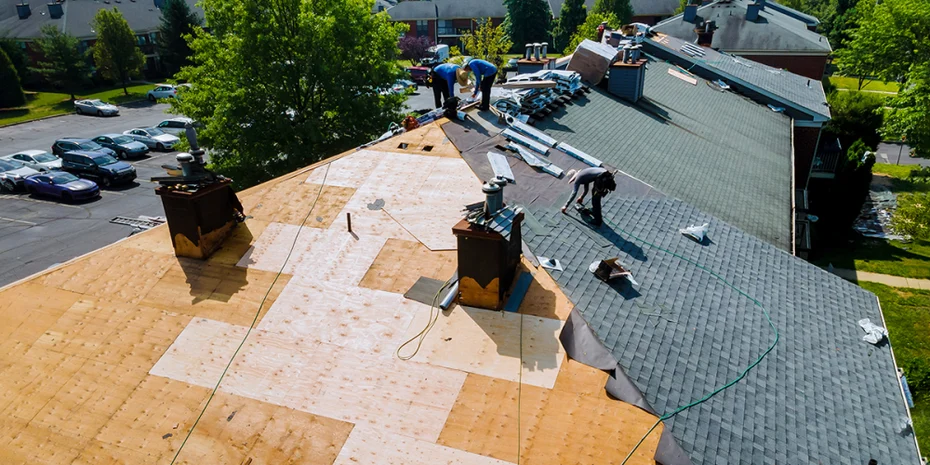Recognizing the Fundamentals of Installing a Residential Roof
Introduction to Residential Roofing
The roof is a primary line of defense against the elements, protecting against rain, snow, wind, and sun. It enhances a home’s aesthetic appeal and contributes to its structural integrity. Understanding the intricacies of residential roofing is imperative for homeowners to make informed decisions when the time comes for installation or renovation. An attractive and well-built roof adds value and improves energy efficiency while guaranteeing the security and well-being of the occupants. With suitable materials and the assistance of a professional team, a roof can serve as both a guardian and an ornament atop your cherished home.
Planning and Preparing for Roof Installation
The adage “fail to plan, plan to fail” holds regarding roof installation. Thorough preparation mitigates potential roadblocks and helps maintain a controlled, efficient project flow. Key planning steps include:
- Assessing the condition of the current roof.
- Determining the scope of work.
- Selecting suitable materials based on specific requirements.
An essential part of preparation is consulting with professionals who can provide valuable insights into project feasibility and help establish a realistic timeline. Homeowners should prepare to accommodate weather influences and potential living adjustments during the construction phase, an aspect frequently overlooked in the excitement of choosing new roofing styles and materials.
Types of Roofing Materials
Homeowners have a host of options when it comes to choosing roofing materials. Variables such as climatic conditions, architectural style, and budget play determining roles in this choice. Asphalt shingles have garnered widespread popularity due to their cost-effectiveness and ease of installation. Metal roofing is more expensive overall. On the other hand, it is notable for its energy efficiency and longevity. Natural materials like slate and wood offer unique beauty but demand significant investment and maintenance. Technological advancements in the industry have introduced a variety of new materials that prioritize both functionality and environmental sustainability. Homeowners can consult sources detailing the latest advancements in residential roofing materials for insights on cutting-edge materials.
The Installation Process Explained
Installing a new roof or replacing an old one involves more than just laying out shingles. It often starts with a detailed inspection to identify any structural issues that must be addressed beforehand. After removing the old roofing material, the roof deck is inspected for damage, such as rot or warping. If the deck is in good shape, workers proceed by laying down an underlayment for additional protection against water infiltration. Subsequent steps involve meticulously installing shingles, tiles, or other chosen materials, with careful attention paid to flashing around roof features like vents and chimneys to prevent leaks. Knowledge of these steps equips homeowners to maintain productive dialogues with their contractors throughout the installation period.
The Role of Professional Roofers
The success of roof installation heavily depends on the proficiency of the roofing team. Experienced professionals bring an invaluable combination of skill, knowledge, and efficiency. Choosing contractors with a track record of success, the necessary insurance, and licenses is essential. They should also exhibit transparency. Homeowners should seek references, read reviews, and inspect past projects when possible. Skilled roofers will make sure the installation meets homeowner expectations and industry standards, avoiding potential problems down the road caused by subpar work.
Costs and Budgeting for Your Roof Installation
Navigating the financial aspects of roof installation requires careful budgeting and a clear understanding of associated costs. Material prices vary widely, as do labor costs, which may fluctuate based on the project’s complexity and timeline. Additional expenses such as permits, waste disposal, and unexpected repairs should also be accounted for in the budget. It can benefit homeowners by allowing them to compare prices and services by obtaining quotes from several contractors. While the cheapest option isn’t always the best, a comprehensive cost analysis will help balance affordability and quality assurance.
Permits and Regulations to Consider
A crucial but often underappreciated aspect of roofing installation involves securing the proper permits and ensuring adherence to local building codes. Although potentially tedious to maneuver, these regulations are designed to maintain community safety and structural integrity standards. Compliance safeguards homeowners against legal and financial liabilities. Staying apprised of the latest changes in building codes is a proactive measure every homeowner should undertake. Resources that offer updates on changes can be valuable tools, such as articles on regulatory changes impacting roof installation.
Maintaining Your New Roof
Following a successful installation, the duty shifts to preserving the new roof’s condition. Proactive maintenance extends a roof’s lifespan and ensures that it continues to confer the highest level of protection to the home. Typical maintenance tasks include:
- Clearing gutters of leaves and debris.
- Inspecting for and remedying minor damages.
- Ensuring proper attic ventilation to prevent heat and moisture buildup.
Seasonal checks are particularly beneficial, as they position homeowners to catch and rectify slight wear or damage before they escalate into more severe problems.
Environmental Considerations in Roofing
Today’s homeowner is increasingly eco-conscious, which extends to roofing choices. The selection of materials and installation methods directly impacts a home’s environmental footprint. Employing recyclable materials can cut waste, and solutions like cool roofing can lower energy usage by reflecting more sunlight and absorbing less heat. Considering the environment when planning a roof installation is socially responsible and can translate into long-term savings regarding reduced energy costs.
Common Pitfalls to Avoid
Common challenges faced in roofing projects include:
- Need for more adequate planning.
- Cutting corners on material quality.
- Selecting less than reputable contractors.
Another frequent oversight is not preparing for the unexpected financially and in terms of project scope. Homeowners who invest time in research, planning, and communication with their chosen professionals are less likely to encounter such pitfalls. Emphasizing thoroughness at every stage, from initial planning to final inspection, is the most effective strategy to prevent common roofing installation errors and ensure a roof that stands the test of time.







